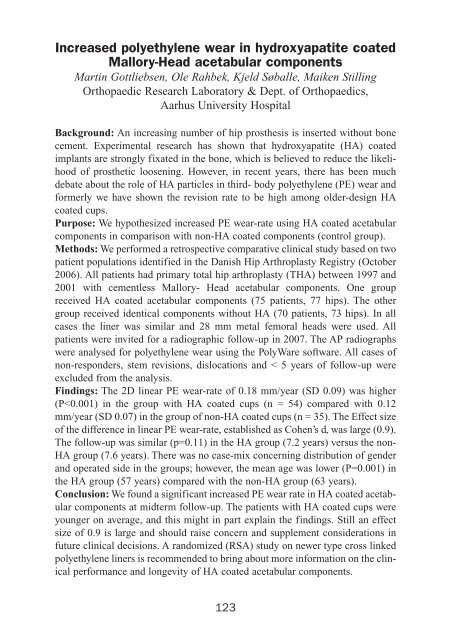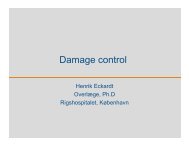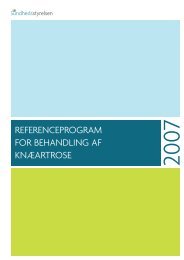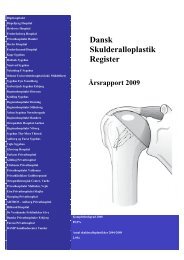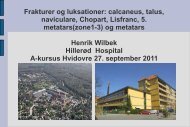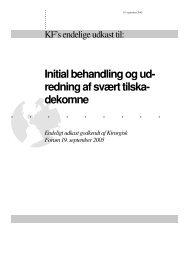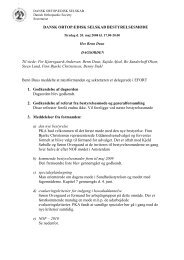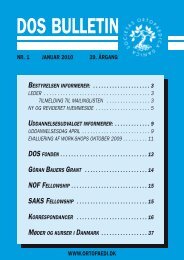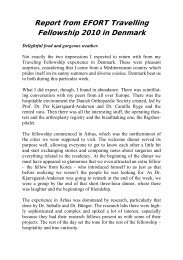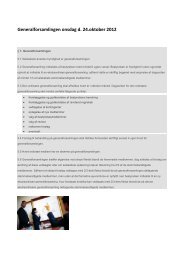DOS BULLETIN - Dansk Ortopædisk Selskab
DOS BULLETIN - Dansk Ortopædisk Selskab
DOS BULLETIN - Dansk Ortopædisk Selskab
You also want an ePaper? Increase the reach of your titles
YUMPU automatically turns print PDFs into web optimized ePapers that Google loves.
2010-378_<strong>DOS</strong> nr. 3 2010 29/09/10 10:08 Side 123<br />
Increased polyethylene wear in hydroxyapatite coated<br />
Mallory-Head acetabular components<br />
Martin Gottliebsen, Ole Rahbek, Kjeld Søballe, Maiken Stilling<br />
Orthopaedic Research Laboratory & Dept. of Orthopaedics,<br />
Aarhus University Hospital<br />
Background: An increasing number of hip prosthesis is inserted without bone<br />
cement. Experimental research has shown that hydroxyapatite (HA) coated<br />
implants are strongly fixated in the bone, which is believed to reduce the likelihood<br />
of prosthetic loosening. However, in recent years, there has been much<br />
debate about the role of HA particles in third- body polyethylene (PE) wear and<br />
formerly we have shown the revision rate to be high among older-design HA<br />
coated cups.<br />
Purpose: We hypothesized increased PE wear-rate using HA coated acetabular<br />
components in comparison with non-HA coated components (control group).<br />
Methods: We performed a retrospective comparative clinical study based on two<br />
patient populations identified in the Danish Hip Arthroplasty Registry (October<br />
2006). All patients had primary total hip arthroplasty (THA) between 1997 and<br />
2001 with cementless Mallory- Head acetabular components. One group<br />
received HA coated acetabular components (75 patients, 77 hips). The other<br />
group received identical components without HA (70 patients, 73 hips). In all<br />
cases the liner was similar and 28 mm metal femoral heads were used. All<br />
patients were invited for a radiographic follow-up in 2007. The AP radiographs<br />
were analysed for polyethylene wear using the PolyWare software. All cases of<br />
non-responders, stem revisions, dislocations and < 5 years of follow-up were<br />
excluded from the analysis.<br />
Findings: The 2D linear PE wear-rate of 0.18 mm/year (SD 0.09) was higher<br />
(P


